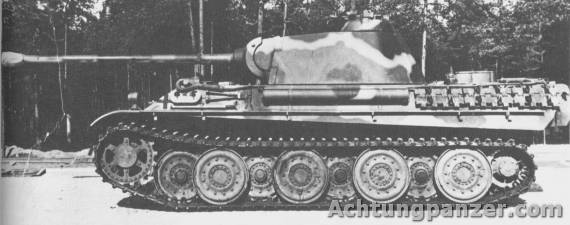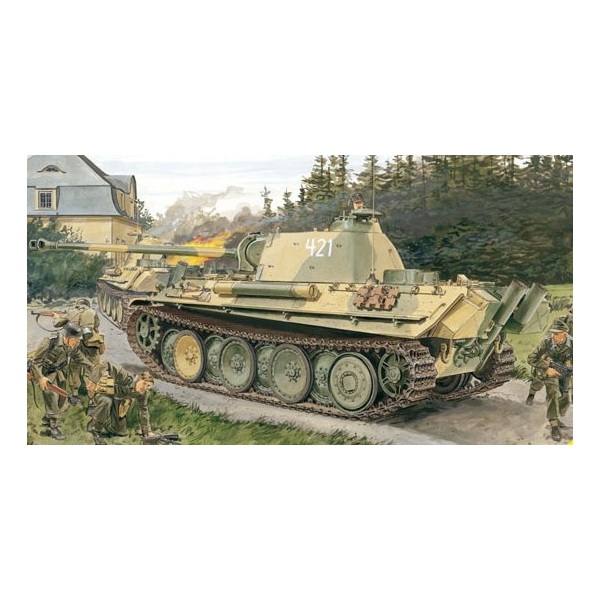Jeff, yes, there's a nice photo on another page on the achtungpanzer site:

This same photo, and another of the same tank but giving a closer up view of those tools on the front, appears in much better quality in the Tom Jentz book "Germany's Panther Tank - The Quest for Combat Supremacy". The shovel handle certainly appears to be a pale wood colour, and the shovel blade is black or dark metal, definitely not painted with the tank. The towing hook just above it (right at the front under the cable end) also looks like plain dark metal or is perhaps black.
The track links I am a bit less clear about - they don't look thoroughly uniform in colour, but whether they are painted I can't be sure.... it might make sense considering how much of the side of the tank they cover.
Another interesting aspect of the paint on this tank, a G with Tiger steel rimmed wheels, which Jentz reckons was completed by MAN in late Sept 44, is that although on the face of it a hard edged finish, it is certainly spray painted without stencils, but very carefully applied at the factory. The patches are have a tight, close sprayed soft edge, not a hard line as you'd get with a stencil or a brush. Note lack of any of the dots characteristic of what is normally thought of as "ambush" camo. It looks like the wheels aren't camouflaged.
I suppose it is dark yellow, green and red brown - but which is which of the latter two, I'm not sure. One of them looks very dark.



























